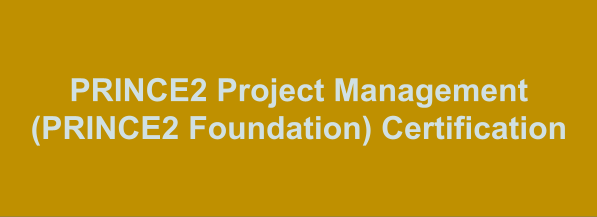PRINCE2 7 Foundation
PRINCE2 Project Management (PRINCE2 Foundation)
PRINCE2 Foundation Exam Summary:
| Exam Name | PRINCE2 Project Management |
| Exam Code | PRINCE2 Foundation |
| Exam Fee | USD $210 |
| Exam Duration | 60 Minutes |
| Number of Questions | 60 |
| Passing Score | 60% |
| Format | Multiple Choice |
| Sample Questions | PRINCE2 2023 Foundation Exam Sample Questions and Answers |
| Practice Exam | PRINCE2 Foundation Project Management Practice Test |
PRINCE2 Foundation 7th Edition Syllabus Topics:
| Unit | Content |
| Understand key concepts relating to projects and PRINCE2 |
- Recall key concepts related to project management: ◉ the definition of the integrated elements of PRINCE2: principles, people, practices, processes and the project context - Describe key concepts related to project management: ◉ the common reasons why project management is used |
| Understand how the PRINCE2 principles underpin the PRINCE2 method |
- Explain the PRINCE2 principles: ◉ ensure continued business justification - Explain how and why the principles provide the basis of applying PRINCE2, and which factors influence the way the PRINCE2 method can be tailored and applied, who is responsible, and how tailoring decisions are documented |
| Understand the importance of people in successful projects |
- Define key concepts related to the people element: ◉ organizational ecosystem - Explain the difference between concepts related to the people element: ◉ people within the project and people affected by the project - Explain key concepts related to the people element: ◉ change management and why it is important - Explain the purpose of the management products required to support the people element of projects: ◉ PID: change management approach - Explain how people aspects integrate with other PRINCE2 elements |
| Understand the PRINCE2 practices and how they are applied throughout the project |
- Explain the purpose of PRINCE2 management products, including: ◉ PID - Explain the purpose of the ‘business case’ practice ◉ project brief - Define key concepts related to the ‘business case’ practice: ◉ output - Describe the guidance for effective management of the business case, including: ◉ business case lifecycle - Describe the PRINCE2 technique for the ‘business case’ practice ◉ project management team structure - Define key concepts related to the ‘organizing’ practice: ◉ project board - Describe the guidance for effective organizing of: ◉ the three project interests - Describe the PRINCE2 technique for the ‘organizing’ practice ◉ work package description - Define key concepts related to the ‘plans’ practice: ◉ schedule - Describe the guidance for effective management of plans: ◉ the planning horizon - Describe the PRINCE2 technique for the ‘plans’ practice ◉ product description - Define key concepts related to the ‘quality’ practice: ◉ user quality expectations - Describe the guidance for effective management of quality: ◉ quality planning - Describe the PRINCE2 technique for the ‘quality’ practice ◉ Explain the purpose of the ‘risk’ practice - Define key concepts related to the ‘risk’ practice: ◉ a risk: threat or opportunity based on uncertainty - Describe the guidance for effective management of risk: ◉ risk planning - Describe the PRINCE2 technique for the ‘risk’ practice ◉ PID: issue management approach - Define key concepts related to the ‘issues’ practice: ◉ issue (including types of issue: change, problem/concern, business opportunity, request for change, off-specification) - Describe the guidance for effective management of issues: ◉ baselines - Describe the PRINCE2 technique for the ‘issues’ practice ◉ checkpoint report - Define key concepts related to the ‘progress’ practice: ◉ forecast - Describe the guidance for effective management of progress: ◉ tolerances for progress control - Describe the PRINCE2 technique for the ‘progress’ practice |
| Understand the PRINCE2 processes and how they are carried out throughout the project |
- Explain the purpose of the PRINCE2 processes: ◉ starting up a project - Explain the objectives of the PRINCE2 processes: ◉ starting up a project - Explain the context of the PRINCE2 processes: ◉ starting up a project |





0 comments:
Post a Comment